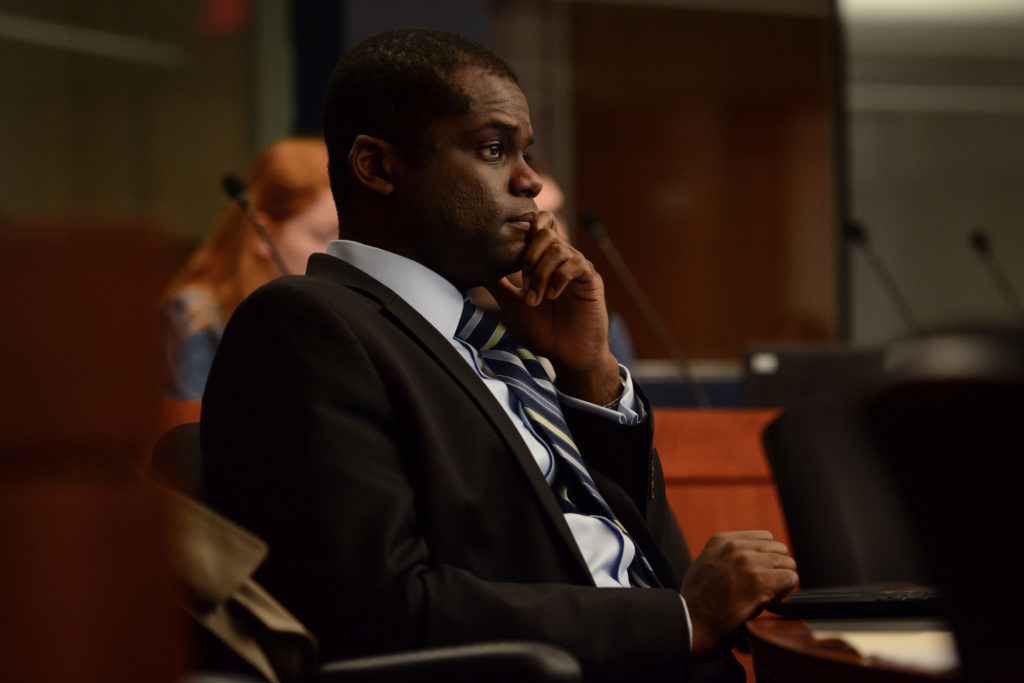The University has yet to start searching for a permanent leader of its human resources department more than two years after the previous head stepped down.
Dale McLeod has served as interim vice president for human resources since Sabrina Ellis announced her departure in January 2016. Experts said a prolonged period without a permeant leader in human resources could stall projects, but waiting to find a strong candidate for the position could help ensure the long-term success of the office.
University spokeswoman Maralee Csellar said Mark Diaz, the new executive vice president and chief financial officer – who will oversee HR – will assess McLeod’s portfolio when he begins his role in August. She said McLeod has made improvements to the employee recruitment and onboarding processes, especially with the launch of Talent@GW orientation, an online resource that manages training, compensation and hiring and was launched in July.
She declined to say why a permanent leader hadn’t yet been selected for the office. She did not say if anyone other than Diaz would be involved in the search for the next vice president or what the department is looking for in its next leader.
“As the interim leader, Dale has focused on process improvements, system implementations, organizational structure and improved communications,” she said in an email.
When Ellis left in 2016, the office moved under the oversight of Ann McCorvey, the deputy executive vice president and treasurer.
The absence of a permanent vice president for HR comes as University President Thomas LeBlanc begins his focus on staff culture with the goal of improving the “transactional” culture at the University. By mid-year, HR plans to launch a new staff orientation program designed to better integrate all employees into the overall mission of the University.
Martin Finkelstein, a professor of higher education at Seaton Hall University in New Jersey, said holding off on hiring a vice president of human resources could be part of a cost saving effort, as interim officials typically aren’t as highly paid. All offices and departments in GW’s central administration have been asked to slash their budgets by about a quarter until 2020.
Without a permanent leader, he said it might be difficult for the department to handle staff relations and development at a university of GW’s size because of the complex nature of the job. Finkelstein said dealing with different unions can be especially challenging, but even negotiating needs of different departments requires a leader familiar with the organization of a very large workforce.
In 2016, after Ellis’ departure, turnover in the human resources department impacted the hiring of support staff for different departments.
Some projects might need be put on hold when the office has interim leadership, Finkelstein said. Since Ellis left, 12 projects are listed as completed on the department’s website with eight projects currently in the works.
Officials in the department said they would revisit a previous project on hiring temporary employees this spring, a task experts said might be easier to implement with a permanent leader in place. Students said they benefited from the University’s revamped hiring process for student employees from early last year.
He said more sensitive incidents like workplace sexual harassment and other employee complaints could be reported less often without a permanent leader who is a reliable figure to faculty and staff.
“That’s probably an uncomfortable position and it’s probably hard to hold onto people,” he said.
Andy Brantley, the CEO and president of the College and University Professional Association for Human Resources, said two years is longer than many institutions across the country would go without a permanent leader in human resources. He said it can be challenging for universities to attract top talent because many prefer to work at cooperations rather than higher education.
After a top official leaves, he said some universities choose to put their departments in an “interim” mode while they decide the next steps for the department.
“Some campuses do take the time to really assess what’s needed in the role,” he said. “You don’t just find someone to just go into that role.”
LeBlanc has made two top hires since arrving on campus in August, the executive vice president and CFO and the vice president of development and alumni relations, both of whom he worked with at the University of Miami.
Brantley said an effective leader in HR can understand the complex culture of a university and address the needs of different departments and deans when they arrive.
“The ultimate success of GW is really continent upon the degree to which its workforce its faculty and staff see their work as essential,” he said.





